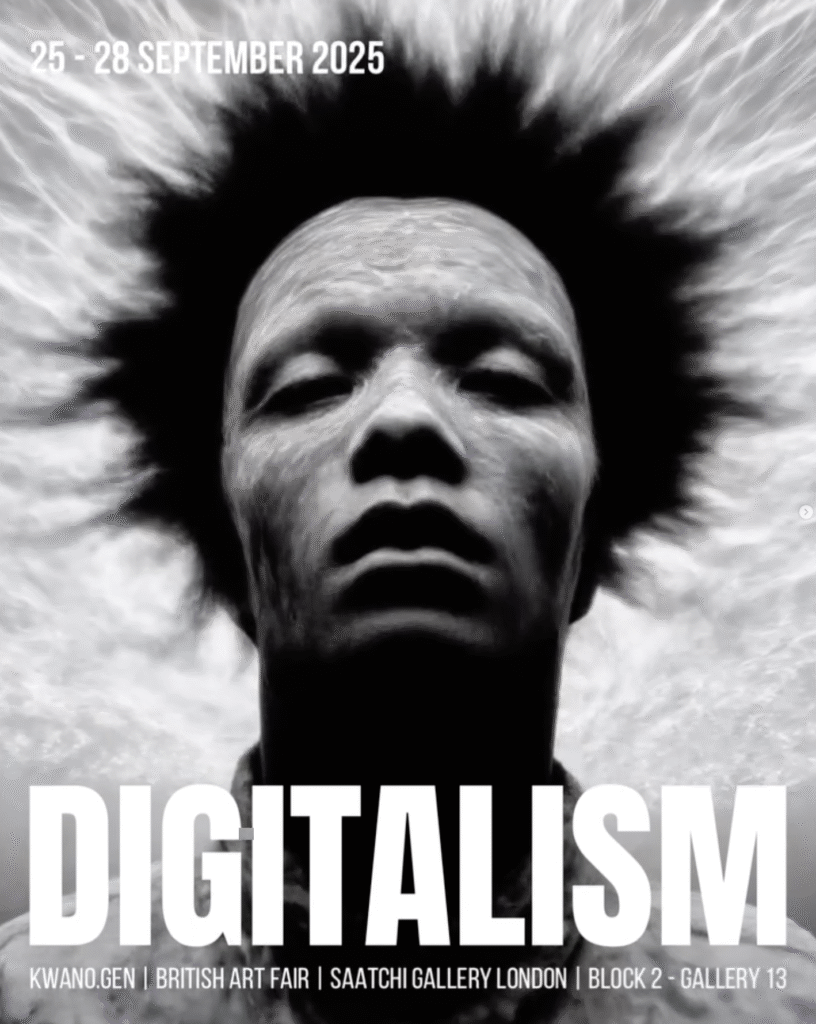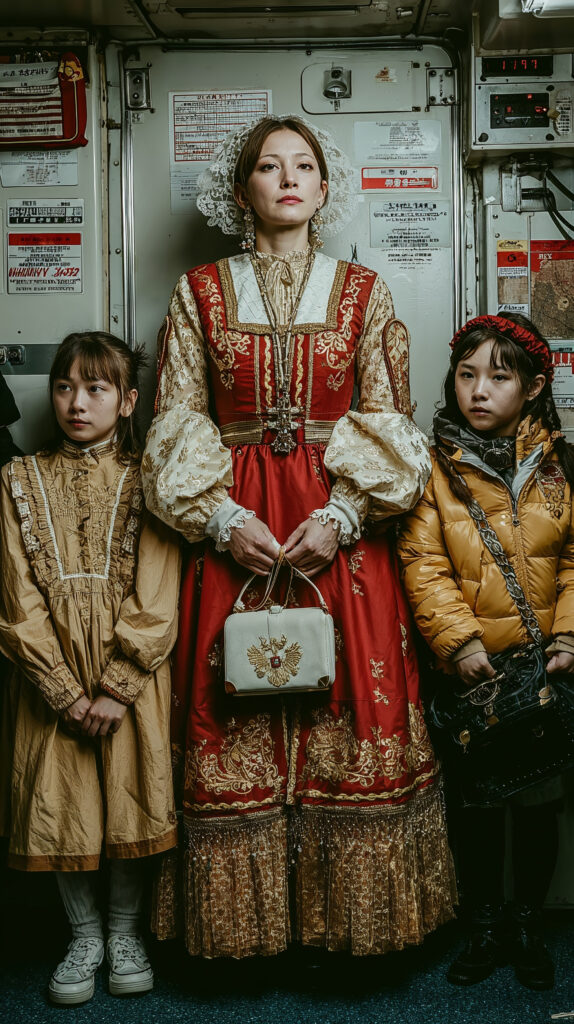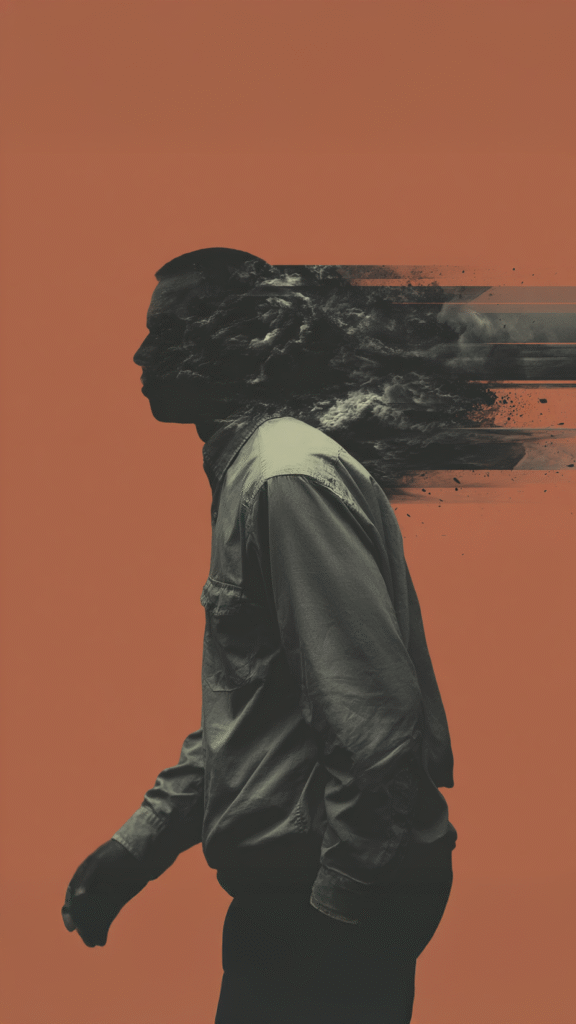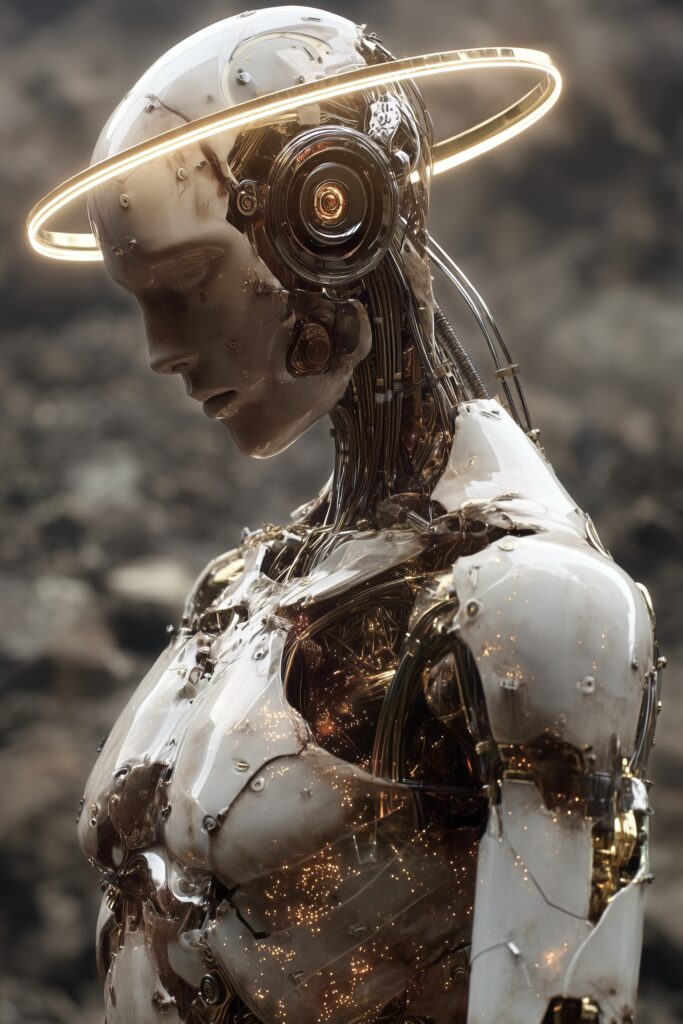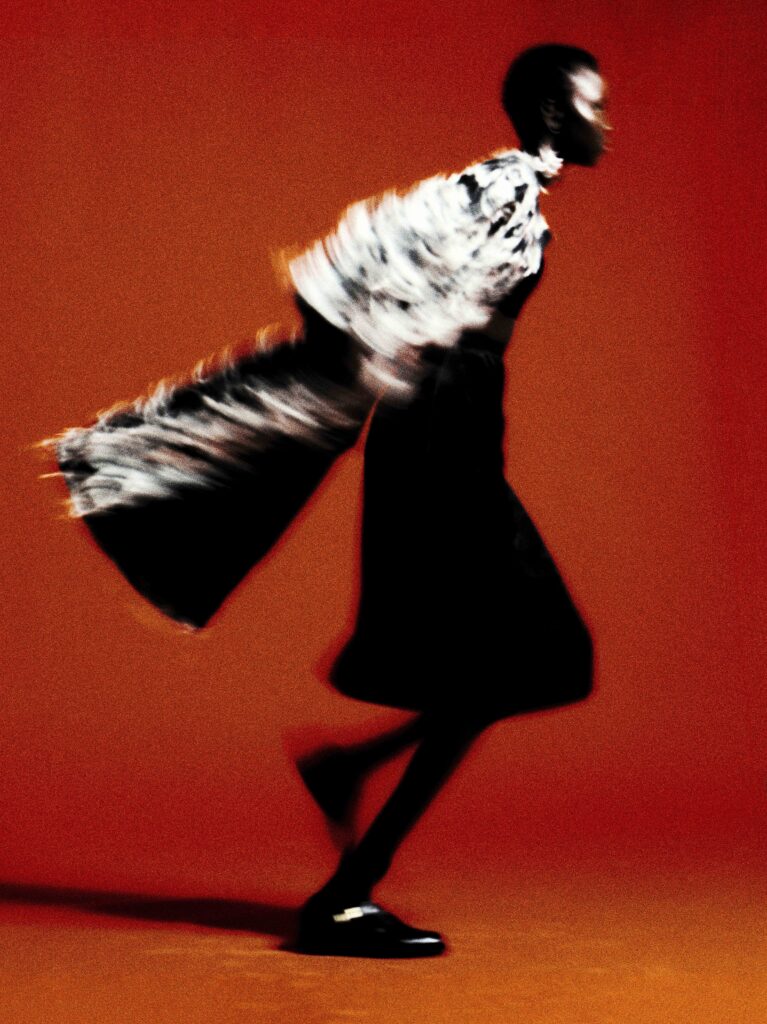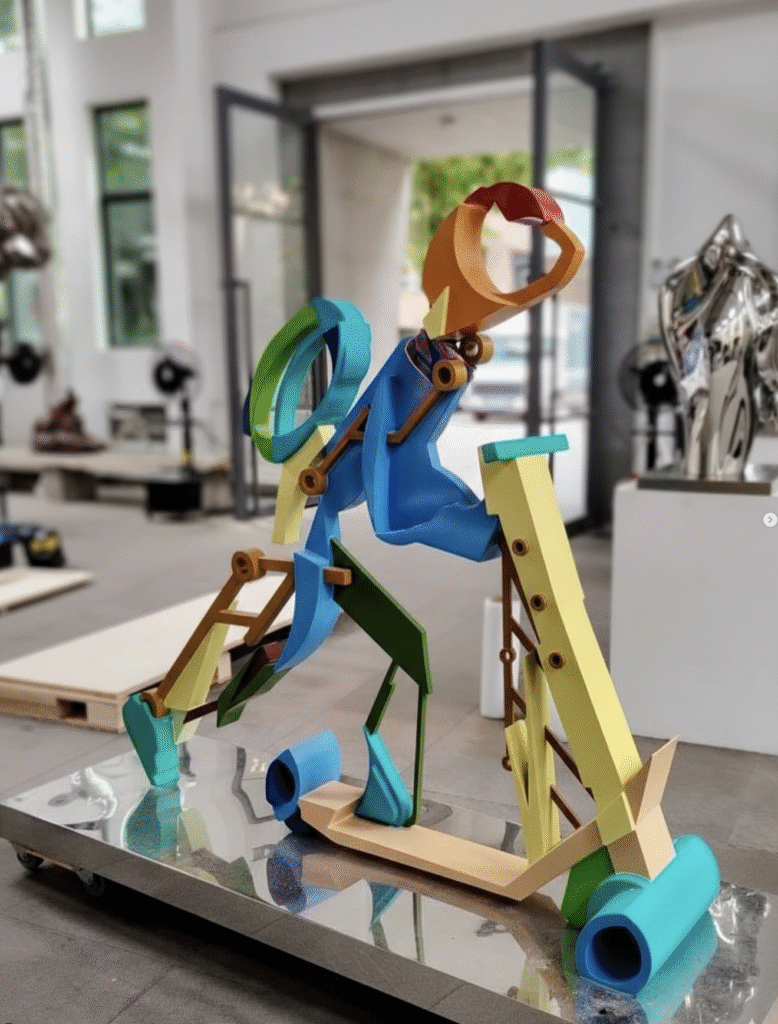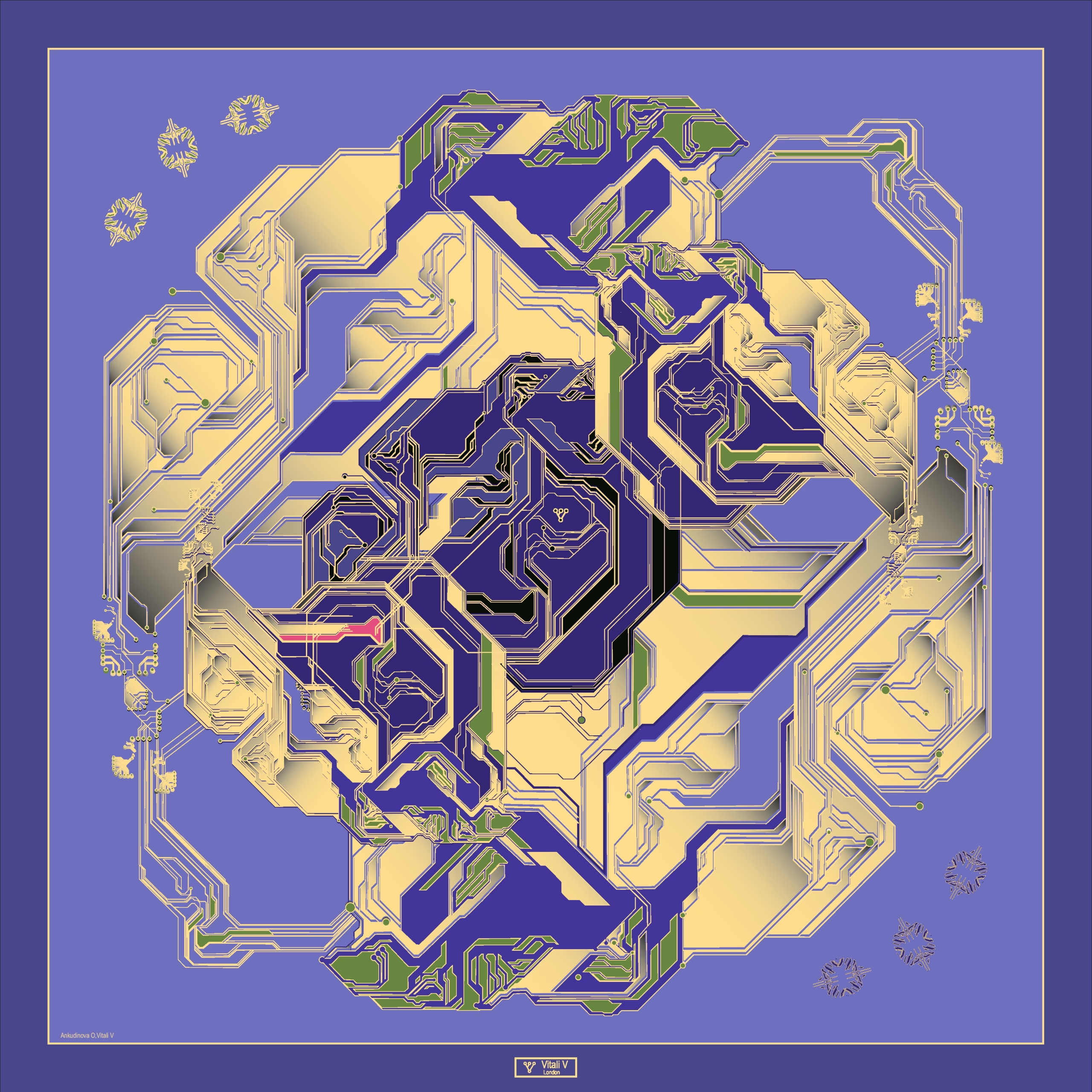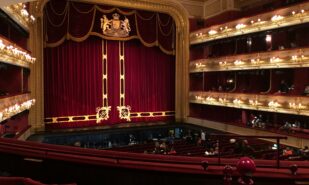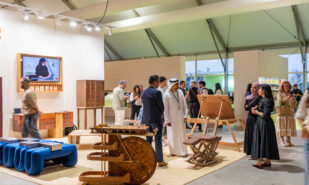The 25th of September sees the opening of Digitalism at the Saatchi Gallery, an ambitious showcase of more than sixty artists exploring the fertile ground where art and technology converge. Conceived in 2024 by British Art Fair owner Will Ramsay and curator–artist Rebekah Tolley-Georgiou, the initiative began as PIVOTAL and has quickly evolved into a fully fledged movement. For Tolley, Digitalism is not simply “digital art” but a cultural space where AI, AR, VR and generative systems challenge our sense of authorship, identity, and reality. As she guides visitors through this new terrain, Tolley draws on her own practice to curate with both empathy and rigour, inviting audiences to experience works that are as conceptually probing as they are visually arresting. I spoke with Rebekah Tolley to explore how Digitalism has emerged, what she hopes the exhibition will do, and what comes next.
Not just digital art: Rebekah Tolley explains Digitalism
How was the idea of Digitalism born? What was the starting point for creating a new direction in art?
The roots of DIGITALISM go back to 2024, when Will Ramsay, founder of the Affordable Art Fairs, who became owner of the British Art Fair in 2022, invited me to create the first ever section of the fair devoted entirely to digital art. The result was PIVOTAL: Digitalism, the first such initiative in the fair’s 36-year history.
PIVOTAL was produced and curated by myself, with the support of an advisory team of luminaries in the field of digital art that I was fortunate to bring together. This included Royal Designer for Industry Peter Higgins; BIMA Digital Hall of Fame alumnus and futurist Tomas Roope (Honorary Royal Designer for Industry); award-winning artist and RCA lecturer Lol Sargent — who had long referred to his MA Digital Direction students as “Digitalists,” directly inspiring the name of the movement; London-based New Zealand artist Jacqui Kenny (aka The Agoraphobic Traveller); multimedia technical manager Tom Cullen, who has led installations for Sir Isaac Julien, Bill Viola, Gillian Wearing, Steve McQueen, and others; and artist/creative director Jack Hardiker RCA of Office of Everyone.
What counts as Digitalism? How is it different from just digital art?
Digital art describes the tools; Digitalism describes the movement. Anyone can use digital tools, but not everyone is working within the conceptual and cultural space that Digitalism defines. Digitalism is where technology, aesthetics, and critical thought converge. It’s not just “art made with a computer” — it’s art that interrogates how digital systems shape our lives, identities, relationships, and even our sense of reality.
Digitalism has already been referred to as a continuation of experimentation with digital art from the 60s. What historical examples have inspired you?
I love that parallel. The pioneers of computer art in the 1960s — artists like Vera Molnár, Harold Cohen with AARON, and Frieder Nake — laid the groundwork for thinking of the computer not just as a tool, but as a creative partner. Equally, the conceptual provocations of Nam June Paik, or the algorithmic experiments of Manfred Mohr, remind us that these dialogues between art and technology have deep roots. Digitalism honours that history but asserts its own place in the 21st century, at a time when algorithms and networks are woven into the fabric of daily life.
There are over 60 artists in the exhibition. What criteria did you use in choosing the participants?
Curation was driven by three main principles: innovation, resonance, and diversity. First, the artists had to be pushing the boundaries of technology in meaningful ways — not just using tools, but interrogating them. Second, the work had to resonate emotionally, inviting audiences to connect rather than stand at a distance. And finally, I was committed to diversity of voices — geographically, culturally, and in terms of medium. Digitalism is not one aesthetic, but a chorus of perspectives.
What emotions are you expecting to evoke in the viewers when they first encounter Digitalism?
A mixture of wonder and recognition. Wonder at the scale of invention — the immersive AR, the hypnotic AI-generated imagery, the generative soundscapes. But also recognition: the realisation that these works are speaking directly to our daily experience of living in a digitalised world. I hope audiences leave feeling both inspired and unsettled, because art should stir as much as it soothes.
Which technology (AI, AR, VR, generative algorithms) do you see as the most revolutionary for contemporary art and why?
AI is undoubtedly the most disruptive because it challenges our notions of authorship, originality, and even consciousness. But I would also champion AR as revolutionary in a quieter way — it blends the physical and digital seamlessly, without asking you to disappear into a headset. It changes the way we experience public space, galleries, even our homes. In fact, the combination of AI and AR feels particularly potent for the future.
Is Digitalism changing traditional notions of painting, sculpture or photography, in your opinion?
Absolutely. We’re seeing works that borrow the language of painting but are generated through code, sculptures that exist simultaneously in physical and virtual form, and photography that is entirely synthetic yet emotionally charged. Digitalism doesn’t replace those traditions — it extends them. Just as photography didn’t kill painting, but transformed it, digital practices are reshaping our traditional mediums in ways that expand rather than diminish them.
You are an artist and curator yourself. How does your personal experience influence your choice of exhibition concept and curatorial perspective?
As an artist, I understand the vulnerability of putting work into the world — that helps me curate with empathy. As a curator, I see myself as a bridge: translating between artists, collectors, and audiences, and creating contexts where digital work can be experienced with the same seriousness as oil on canvas. My practice makes me sensitive to nuance; my curating gives me perspective. The two roles constantly inform each other.
What horizons do you see for Digitalism in 5-10 years? Are there plans for global expansion or international projects?
Without a doubt. Digitalism has already proved its resonance in London, but I see it as a global movement. Technology is borderless, and so is this art. We’re already discussing future iterations in Europe, the US, and Asia — always adapting to local contexts while maintaining a unifying vision. In 5–10 years, I hope to see Digitalism recognised as one of the defining movements of our century, not just as a trend.
What do you see as more important in Digitalism and art in general: the visual impact or the idea behind the work?
The strongest works carry both. Visual impact grabs you; the idea makes you stay. Digitalism is particularly strong when the spectacle of technology is matched with conceptual depth. If it’s only flashy visuals, it risks becoming gimmickry. If it’s only ideas, it risks alienating the audience. The sweet spot is where the two converge.
Does Digitalism have a musical soundtrack? If so, what kind? Would you consider including music in your exhibition?
I love this question. In many ways, Digitalism already has a soundtrack, because so many works are generative, immersive, or rhythmic in ways that evoke sound even in silence. We have had audio-visual installations where sound was integral. In the future, I’d love to formally commission a Digitalism Soundtrack — perhaps blending algorithmic compositions with human musicianship, mirroring the way Digitalism itself merges human and machine creativity.
How many cups of coffee or how many hours on the computer does it take to put together such an exhibition?
Too many to count! Let’s just say that curating Digitalism is equal parts caffeine and conviction. There are long hours in front of the screen, but they’re always balanced by the privilege of working with visionary artists and seeing the ideas come alive. At the end of the day, it doesn’t feel like work — it feels like building the future.


